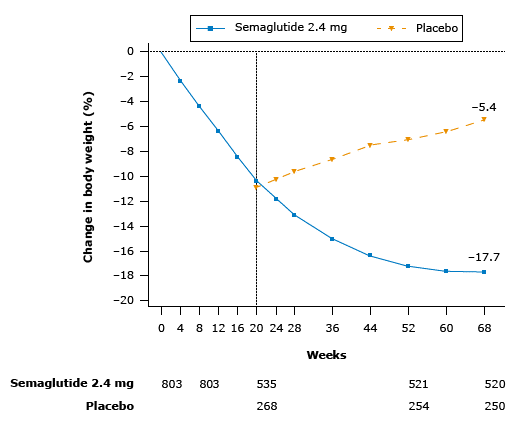The Craze of GLP-1 Injections and No Free Ride
You have probably heard about the weight loss effects of medications such Semaglutide and Tirzepatide. These medications are highly effective at weight reduction with most studies showing a 15-20% weight loss at 68-72 weeks. These medications work by mimicking the natural effects of a hormone called glucagon like peptide. When we eat, our stomach and small intestine sense this sudden uptake of nutrients and release this hormone. This hormone tells our brain we are full, our intestine to slow down and start digesting, our pancreas to start releasing Insulin and Glucagon (stored forms of glucose) to stop being released. As this process ensues, we tend to eat less, feel fuller longer and as such, start to lose weight. However, weight loss is just a very rough estimate of the changes that are happening beneath the skin. A recent study by Nelson et.al (2024) reviewed CT scans of 241 patients before and after using Semaglutide. By measuring fat / muscle thickness, they found these patients lost 10% visceral (belly) fat, 10% subcutaneous (skin) fat, 8% muscle mass and 8% liver volume (liver fat). Another study by Karakasis et.al (2024) looked at 22 randomized controlled trials involving 2258 participants treated with GLP-1 injections. These patients on average lost 10 lbs however 25% of that weight loss was comprised of lean muscle mass.
What’s the big deal with losing muscle mass you might ask. Skeletal muscle mass comprises 20-30% of the Basal Metabolic Rate. The basal metabolic rate is the amount of calories your body consumes at rest. If we start to lose our ability to burn calories at rest, we essentially are “resetting” our caloric needs. Simply put, if my weight were to never change on a 2,000-cal diet and I decided to start Semaglutide losing 20lbs, I have essentially lost 5 lbs of lean muscle. Now suppose I stop Semaglutide, I can no longer go back to a 2,000-calorie diet and maintain the same body weight. I would need to eat 1600 calories to maintain my new weight. This pattern can clearly be seen in the following graph.
This graph describes a trial that involved 902 patients started on Semaglutide. At 20 weeks, ½ of the clients were randomly assigned to continue Semglutide or placebo. The placebo group steadily gained the weight back once the injections stopped. Unfortunately, their body composition had changed and they were now with 25% less muscle mass than before starting the treatments.
A meta-analysis review by Berg (2025) evaluated 8 randomized control trials involving 2372 participants treated with then discontinued from GLP-1 treatment. They found that the participants regained much of the weight previously lost once GLP-1 treatment ceased.
This “yo-yo” dieting pattern has forever been present for decades and continues to plague our society. Our bodies are amazingly complex machines that are designed to adapt to the demands placed on them. Our bodies are designed to store energy and prepare for a state of stress. If we go on an extreme 500-cal diet, we lose muscle mass, reset our BMR and once our diet stops, have essentially created a situation where we will gain weight quicker and loose weight slower than pre-diet attempts.
So, what do we do? As the article title explains, there is no free ride. To achieve a healthy weight that can be maintained throughout our life, we must build muscle, slowly drop fat, change our brains craving for food and increase our BMR. This can only be accomplished through hard work and discipline. Yes, we have many wonderful drugs to assist us in the process however to really be successful, there is no other way than through “pumping iron and dropping sweat”.
Karakasis, P., Patoulias, K., Fragakis, N., Mantzoros, C. (2025, March). Effect of glucagon-like peptide-1 receptor agonists and co-agonists on body composition: Systematic review and network meta-analysis. Metabolism, 164, 1-7.
WEGOVY semaglutide injection 2.4 mg US Food and Drug Administration (FDA) approved product information. Revised July 2023. US National Library of Medicine
Berg, S., Stickle, H., Rose, S., Nemec, E., (2025, April). Discontinuing glucagon-like peptide-1 receptor agonists and body habitus: A systematic review and meta-analysis. Obesity Reviews
Nelson, L., Lee, M., Garrett, J., Pickhardt, S., Warner, J., Summers, R., Pickhardt, P. (2024, December). Intra-patient Changes in CT-Based Body Composition After Initiation of Semaglutide (Glucago-Like Peptide-1 Receptor Agonist) Therapy. American Journal of Roentgenology

